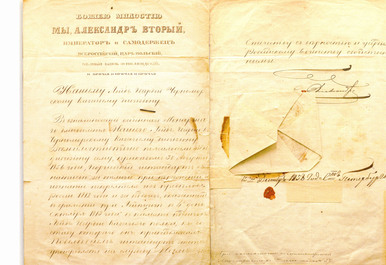In the history of the Russian army, silver trumpets were first granted as a combat award in 1737. The battalion of the Izmailovsky Lifeguard Regiment received the trumpets as a sign of distinction for the bravery in the siege of Ochakov. No award inscriptions were made on the trumpets at the time, but Emperor Paul I ordered ‘to honor them with regalia’.
Kuban Cossacks received several dozen silver trumpets for participating in the Russo-Turkish War of 1877-1878. One of them was for the capture of the Turkish fortified city of Kars — it is now on display in the collection of the museum named after Felitsyn. It was called the St. George Award and was considered a version of the collective St. George Award. There were special rules to be followed. First, the commander of the regiment wrote a personal note regarding the award. The Army Commander reviewed it and sent a petition to the St. George’s Duma, which had to include at least seven Knights of the Order of St. George. The Duma, in turn, submitted its verdict through the Minister of War to the “highest consideration” of the Emperor.
The St. George trumpet had a special design. It was rolled three times so that inside there was a free space of five units called “vershok” — a little more than 22 centimeters. One end of the instrument looked like a wide bell, and a mouthpiece was on the other end. A silver cross with a matte surface was soldered on the outside of the bell and a reward inscription was carved on its right side. The total length of the tube was about 36 centimeters and weighed about 700 grams. The instrument was specially tied with a St. George ribbon with two tassels before being handed over.



